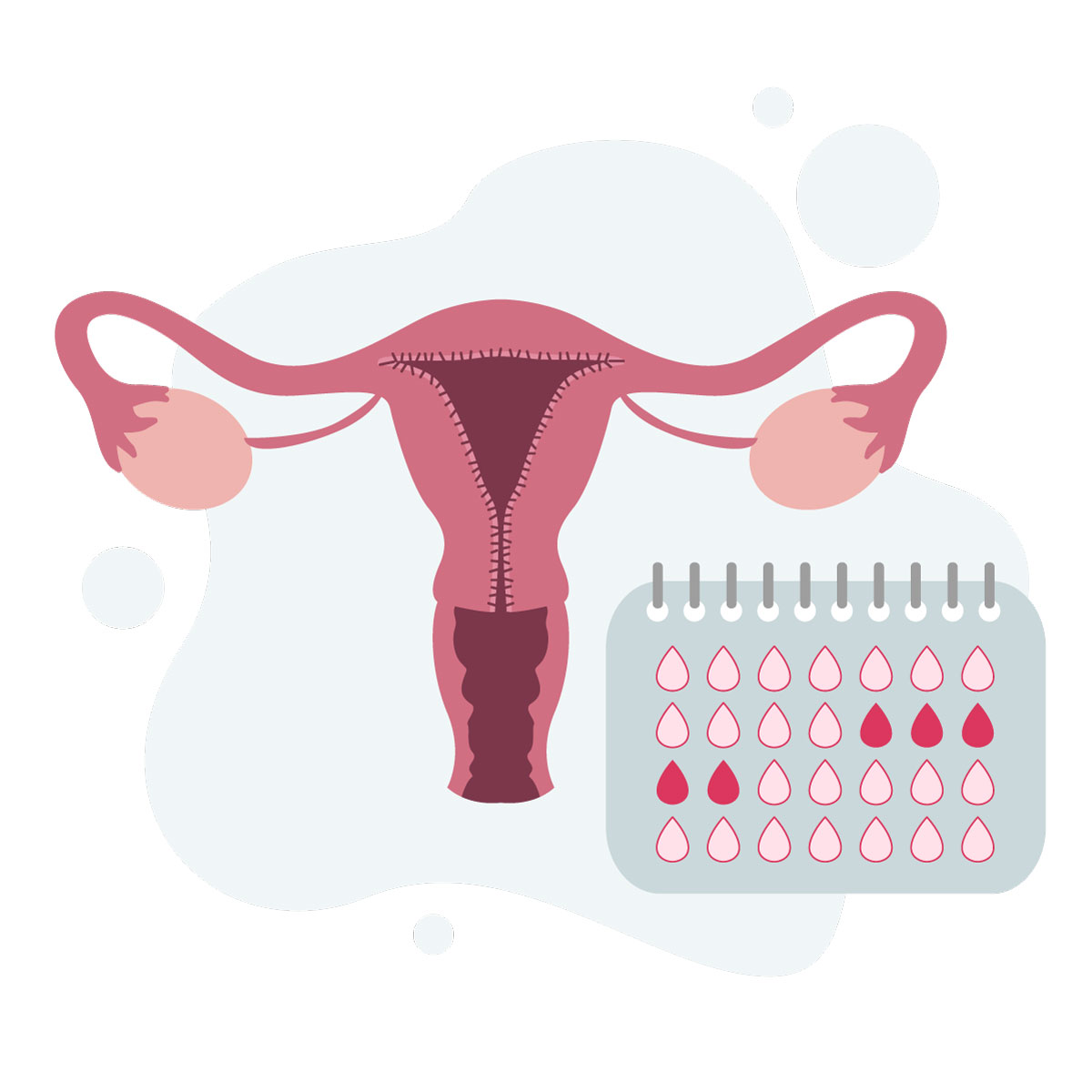
Amenorrhea


Overview
Amenorrhea is a medical condition in women characterized by absence of menstrual period in woman of reproductive age. There are two types of amenorrhea:
- Primary amenorrhea: occurs when a girl fails to have her first period by the age of 15 or within 5 years of breast development (first sign of puberty in females). The normal menstruating age for girls is around 14 to 16 years old. Absence of period can be attributed to hormonal imbalance or other female reproductive system issues.
- Secondary amenorrhea: happens when the menstrual period, which normally comes in regular basis (every 21 to 35 days), suddenly stops for at least three months in a row. This condition is frequently due to pregnancy, stress and hormonal issues.
The cause of amenorrhea will determine the appropriate medications or treatment. The doctor will evaluate an overall health assessment to properly evaluate the patient’s condition.
Symptoms
Sign and symptoms of amenorrhea depend on the underlying cause of the condition, you might experience other symptoms along with amenorrhea such as:
- Milky discharge
- Hair loss
- Headache
- Vision changes
- Excess facial hair
- Pelvic pain
- Acne
- Nausea
Women who experience any of these symptoms, or never menstruated should schedule a consultation with a doctor or gynecologist for proper diagnosis.
Causes
There are several causes of amenorrhea. Some are typical, while others could be adverse effects from medicine or an indication of an underlying health issue.
Natural amenorrhea
In different life stages of an individual, amenorrhea may occur due to natural causes, such as:
- Pregnancy
- Breastfeeding
- Menopause
Contraceptives
Amenorrhea can occur due to intrauterine devices, injectable or implantable contraceptives and even oral contraceptives such as birth control pills, might cause irregular periods in certain users as the pill contains hormones that regulate menstruation. If the person decides to discontinue taking it, regular ovulation and menstruation may take a few months to return to normal cycles.
Medications
Menstrual cycles may stop after using certain drugs, such as some types of:
- Antipsychotics
- Cancer chemotherapy
- Antidepressants
- Blood pressure medication
- Allergy medications
Lifestyle factors
There are several factors in a person’s habits or lifestyle that can cause amenorrhea, such as:
- Weight. Women who are underweight or 10% below the ideal body weight may experience hormonal irregularities that can affect the body’s ovulation process. The most common cause of low weight related amenorrhea is eating disorder such as bulimia or anorexia.
- Exercise. Women who take part in intensive sports like ballet may experience irregular periods. Low body fat, stress, and high energy deficit all work together to cause amenorrhea in athletes.
- Stress. The hypothalamus, an area of the brain that manages the hormones that regulate the menstrual cycle, may be affected because of mental stress. As a result, ovulation and menstruation can stop. Once the stress levels drop, menstruation will normally start up again.
Hormonal Imbalance
There are several conditions and illnesses that can trigger hormonal imbalance in women, such as:
- Polycystic ovary syndrome (PCOS). PCOS is a condition wherein the ovaries produce high level of androgens which cause imbalance. The abnormality in hormones can interfere with ovulation.
- Thyroid malfunction. The thyroid gland generates hormones that regulate metabolism and are involved in puberty and menstruation. Amenorrhea and other menstrual problems occur when a person has overactive (hyperthyroidism) or underactive (hypothyroidism) thyroid glands.
- Pituitary tumor. The pituitary gland controls the production of hormones. Although pituitary tumors are often benign (noncancerous), they might affect the body’s hormonal levels which affect the menstrual process.
- Premature menopause. This occurs when women starts to menopause earlier than normal so the ovaries stop or reduce its production of eggs below the age of 40, which causes a lack of menstruation. Menopause often starts around the age of 50.
Structural problems
Issues in the structure of reproductive system can also result in amenorrhea. This includes:
- Uterine scarring. After a dilation and curettage (D&C), cesarean section, or therapy for uterine fibroids, Asherman’s syndrome, a disorder in which scar tissue accumulates in the lining of the uterus, can occasionally take place. The normal accumulation and shedding of the uterine lining are hindered by uterine scarring thus, preventing the menstrual cycle.
- Lack of reproductive organs. A birth defect of the reproductive organs such as absence of reproductive system components like uterus, cervix or vagina that could originated during early development of fetus can cause amenorrhea. With missing parts of the reproductive tract, the menstrual period cannot occur.
- Structural abnormality of the vagina. This happens when there is a blockage in the reproductive passageways. It may seem that a person is not menstruating due to lack of visible blood. The blood may be trapped in the uterus and cervix by a membrane or wall in the vagina.
Risk factors
Amenorrhea-related risk factors include the following:
- Family history. Inheriting a susceptibility if other women in their family have experienced amenorrhea.
- History of certain gynecologic procedures. The risk of amenorrhea is increased if a woman had a dilation and curettage particularly one related to pregnancy, or a procedure known as a loop electrodiathermy excision procedure (LEEP).
- Eating disorders. Anorexia or bulimia are some of the eating disorders that increases the risk of amenorrhea.
- Athletic training. The risk of amenorrhea increases on athletes that regularly undergo intensive training.
Contact Information
service@vejthani.com






















